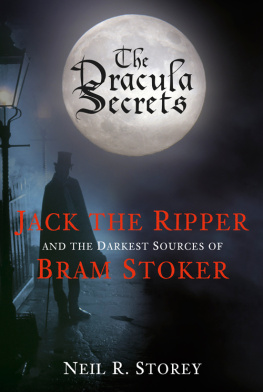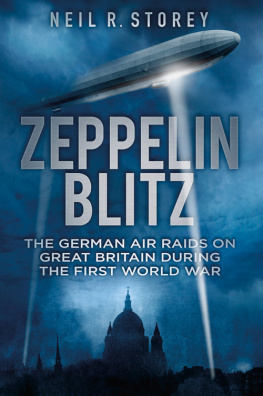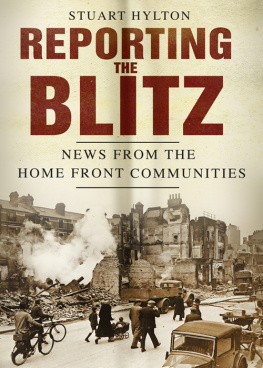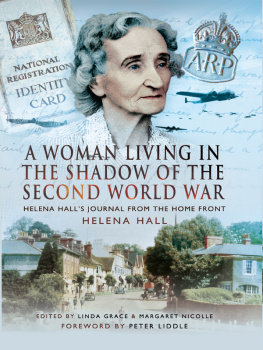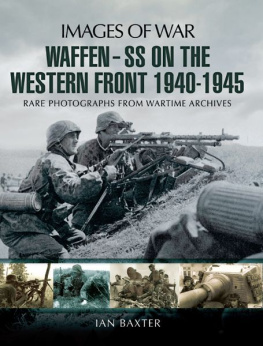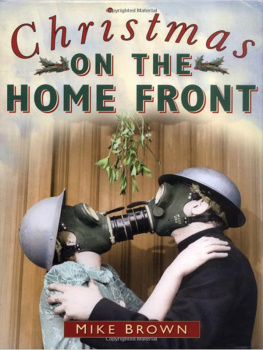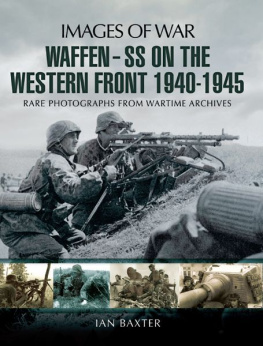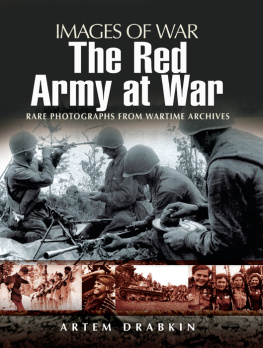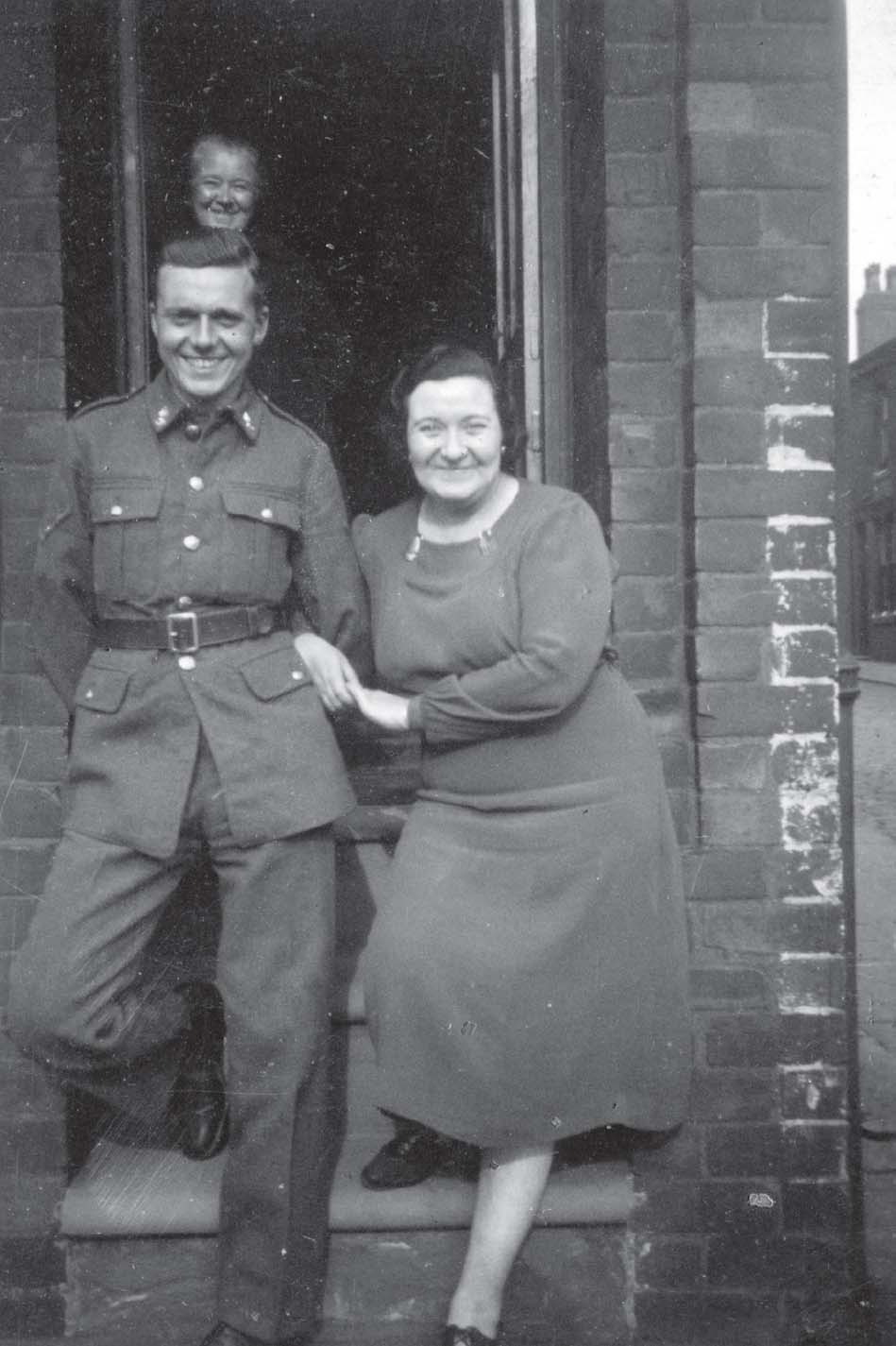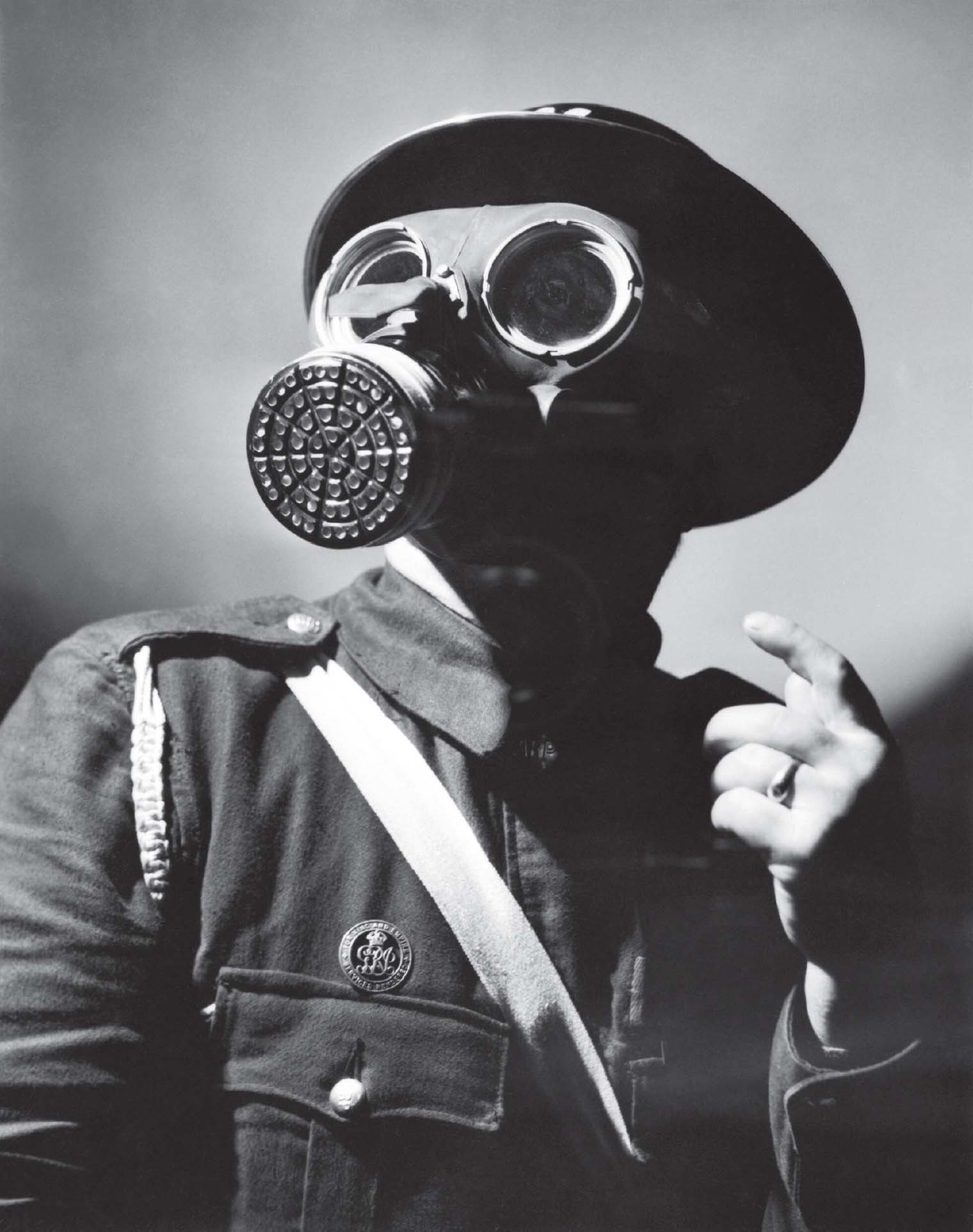
Air Raid Warden wearing his Civilian Duty Respirator, 1940.
Faces of the Home Front
1939-1945
Neil R Storey & Fiona Kay
First published in Great Britain in 2021 by
Pen & Sword History
An imprint of
Pen & Sword Books Ltd
Yorkshire Philadelphia
Copyright Neil R Storey & Fiona Kay 2021
ISBN 978 1 39900 158 8
eISBN 9 781 39900 159 5
The rights of Neil R Storey & Fiona Kay to be identified as Authors of this
work has been asserted by them in accordance with the Copyright, Designs and Patents Act 1988.
A CIP catalogue record for this book is
available from the British Library.
All rights reserved. No part of this book may be reproduced or transmitted in any form or by any means, electronic or mechanical including photocopying, recording or by any information storage and retrieval system, without permission from the Publisher in writing.
Pen & Sword Books Limited incorporates the imprints of Atlas, Archaeology,
Aviation, Discovery, Family History, Fiction, History, Maritime, Military,
Military Classics, Politics, Select, Transport, True Crime, Air World,
Frontline Publishing, Leo Cooper, Remember When, Seaforth Publishing,
The Praetorian Press, Wharncliffe Local History, Wharncliffe Transport,
Wharncliffe True Crime and White Owl.
For a complete list of Pen & Sword titles please contact
PEN & SWORD BOOKS LIMITED
47 Church Street, Barnsley, South Yorkshire, S70 2AS, England
E-mail:
Website: www.pen-and-sword.co.uk
Or
PEN AND SWORD BOOKS
1950 Lawrence Rd, Havertown, PA 19083, USA
E-mail:
Website: www.penandswordbooks.com
For Carol Vickers
Introduction
Hitler knows that he will have to break us in this island or lose the war Let us therefore brace ourselves to our duty and so bear ourselves that, if the British Empire and its Commonwealth last for a thousand years, men will still say: This was their finest hour.
Winston Churchill 18 June 1940
T his book looks at the faces of the British Home Front during the Second World War. Its a mountain of a subject, and like any mountain it has a number of faces to tackle, some easier than others. Every one of these faces is a journey of discovery, be they the people involved, the work they did or the experiences they shared.
Britain in the 1930s and 40s was a very different country to that which we know today, as were the values and beliefs of its people. Time moves on quickly and it is important for us to not judge them too harshly by our modern values; learn by all means, learn not to make the same mistakes, but also see there were some things that were worthwhile, that somehow we have let fade as the years pass by. They were not all heroes, nor were they all angels. There were good, there were bad, they were a people of their time. They were human like you and me.
To obtain some empathy with those times it is important to consider the lifestyles of the majority of ordinary people back then. It was a time when television had been invented but very few people had one. The place now taken by television in most lounges was occupied by a radio in a large wooden or Bakelite case. Foreign stations could be received but most kept their dial on the BBC Home Service that offered a mixed programme of variety entertainment, orchestral music, dance bands and news with programming listed in daily newspapers and Radio Times. If you fancied some live sport you would go and watch or play for your local amateur football or cricket teams. A trip to see your local professionals at their ground would be a real treat.
If you sought moving pictures, some of which may even have colour rather than the usual black and white, you would go to the cinema at least once a week, if you could afford it. This was the golden age of cinema with some audiences in city flicks regularly exceeding 1,000 people. It was also a time when many folks smoked and the air inside the cinema would soon be filled with a mist-like smog that was only penetrated by the shaft of light carrying the moving images onto the screen from the projection room.
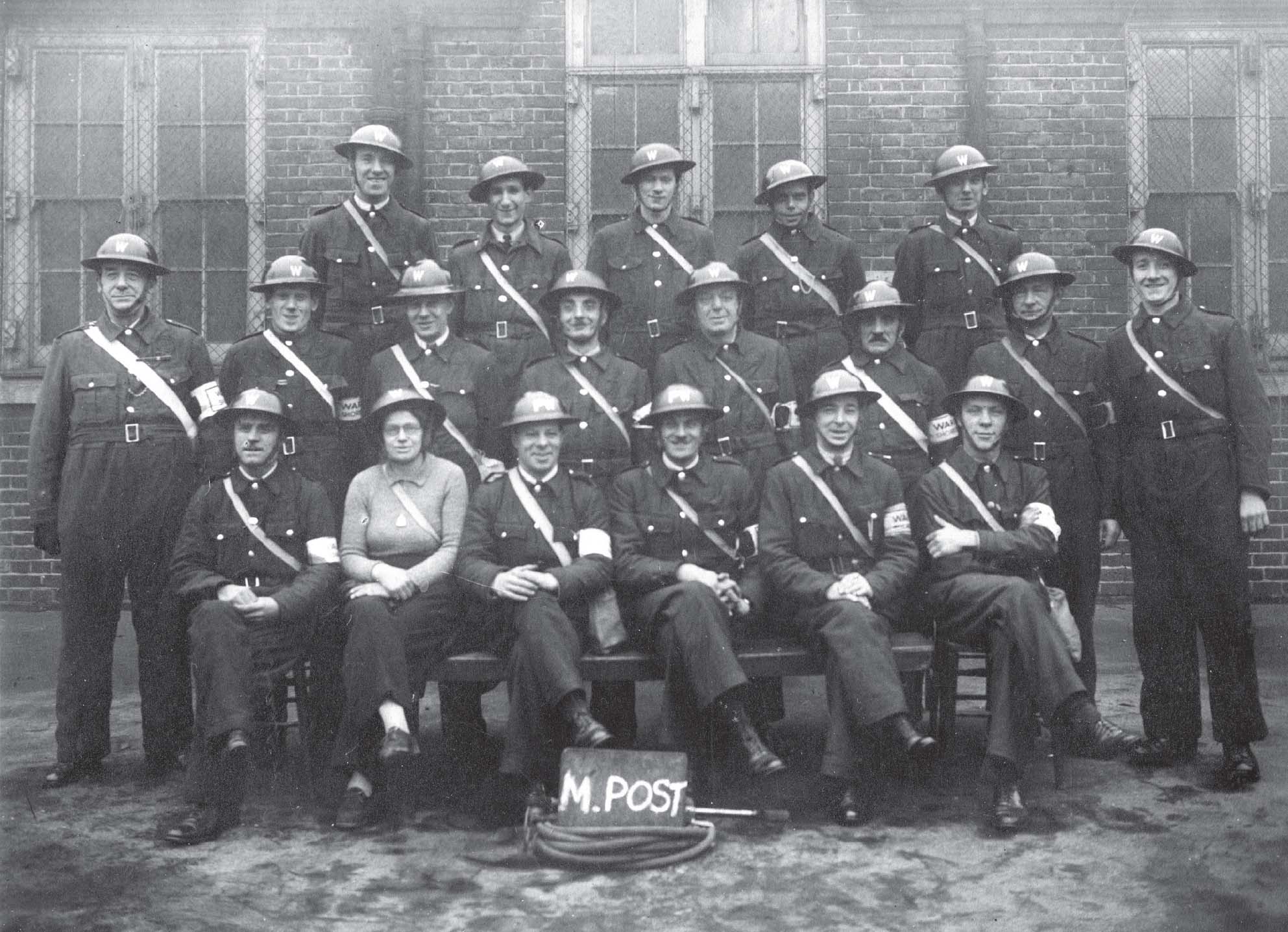
Post Warden and Air Raid Wardens of M. Post, Shoreditch, East London 1940.
For most, their world was the local community where they grew up; people knew and were often friends with their neighbours. Most ordinary working-class families did not have a home telephone. Good and bad, the latest news and gossip was exchanged in conversation and the latest headlines discussed by menfolk down the pub, or by housewives and mums over the garden wall and at the back gate as they hung their washing out while keeping an eye on their young kids playing in the streets and back alleys. Cars were around but still beyond the pocket of many, so most people caught public transport, bicycled or walked to work.
Patriotism was heartily encouraged among all. Children were raised to respect and cherish the royal family, they were taught stories of the powerful and great British Empire, taught to salute the flag and be thankful when they celebrated Empire Day every year. To most, Britain was a leading and just country and was the benchmark for the rest of the world. Many youngsters also had this reaffirmed, and experienced some uniform and drill out of school, as members of the Boy Scouts, Girl Guides and Boys or Girls Brigades. Most homes would display George V jubilee and George VI coronation mugs on a shelf, and even a picture of the royal family on the wall. The National Anthem would be played at public events, even at the cinema, and audiences would stand while it was played. Woe betide you if you didnt stand up, all strata of society actively policed such transgressions in those days!
For the majority of people in the 1930s, the sort that would have been quaintly described as the average man in the street, patriotism was part and parcel of life, as was a sense of duty, although how quickly some people disrupted their lives to actively engage with military or civilian emergency services such as Air Raid Precautions would often depend on how gravely their country needed them. To ensure nothing would be left to chance, Britain introduced the Military Training Act in May 1939 that compelled the first cohorts of young men into the forces for six months military training. Replaced by the National Service Act after the outbreak of war and extended to include women in 1941, it ensured the majority of British adult citizens, if they had not already volunteered, were conscripted for military service in the armed forces or were serving in one of the listed wartime organisations or working for the war effort in factories or on the land.
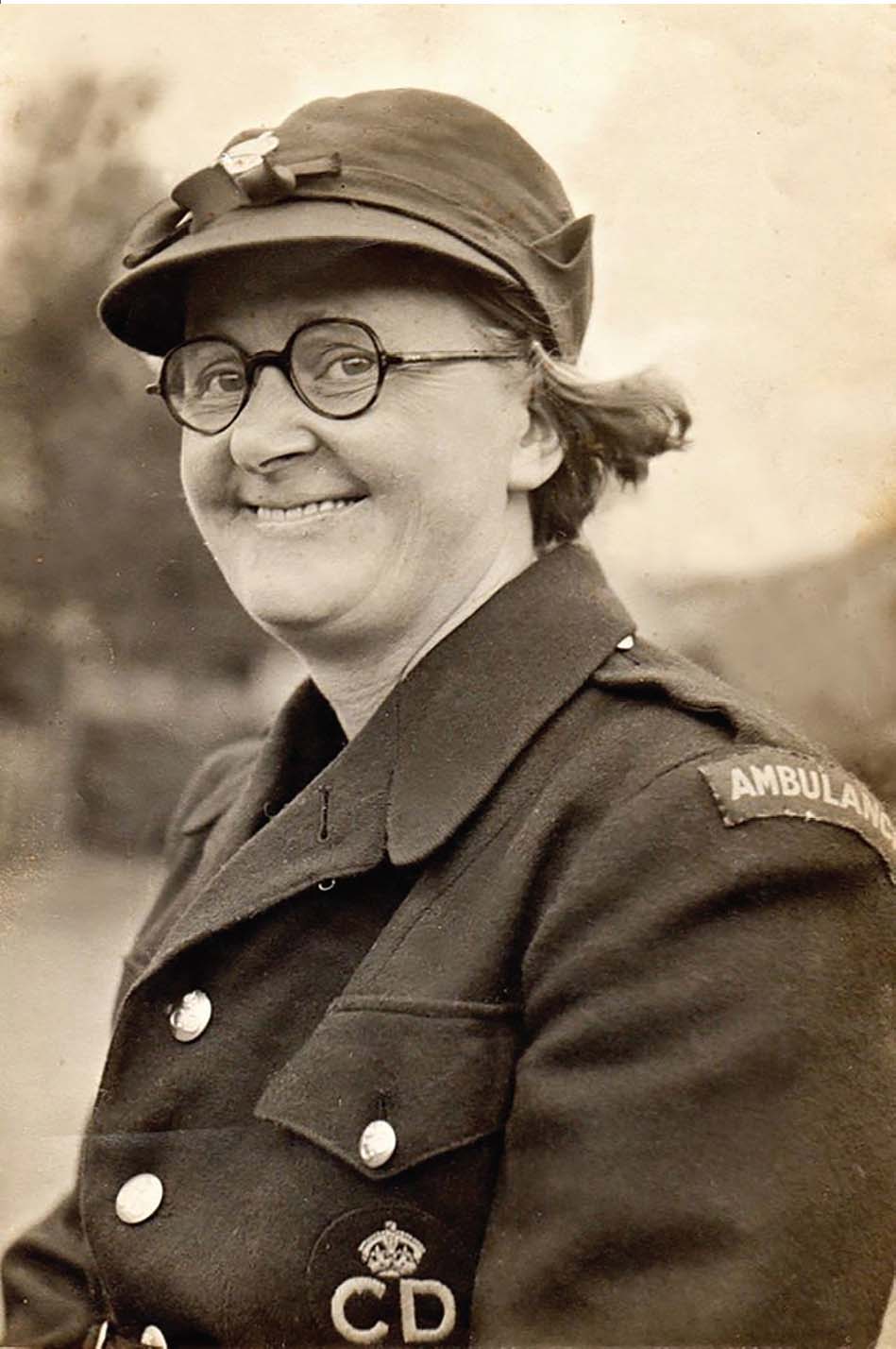
Ambulance Driver Mary Beddow, Wellington, Shropshire 1942.


